Representation matters
To mark International Women’s Day, Curator Louise Wilkie explores the portrayal of women in the College’s art collections
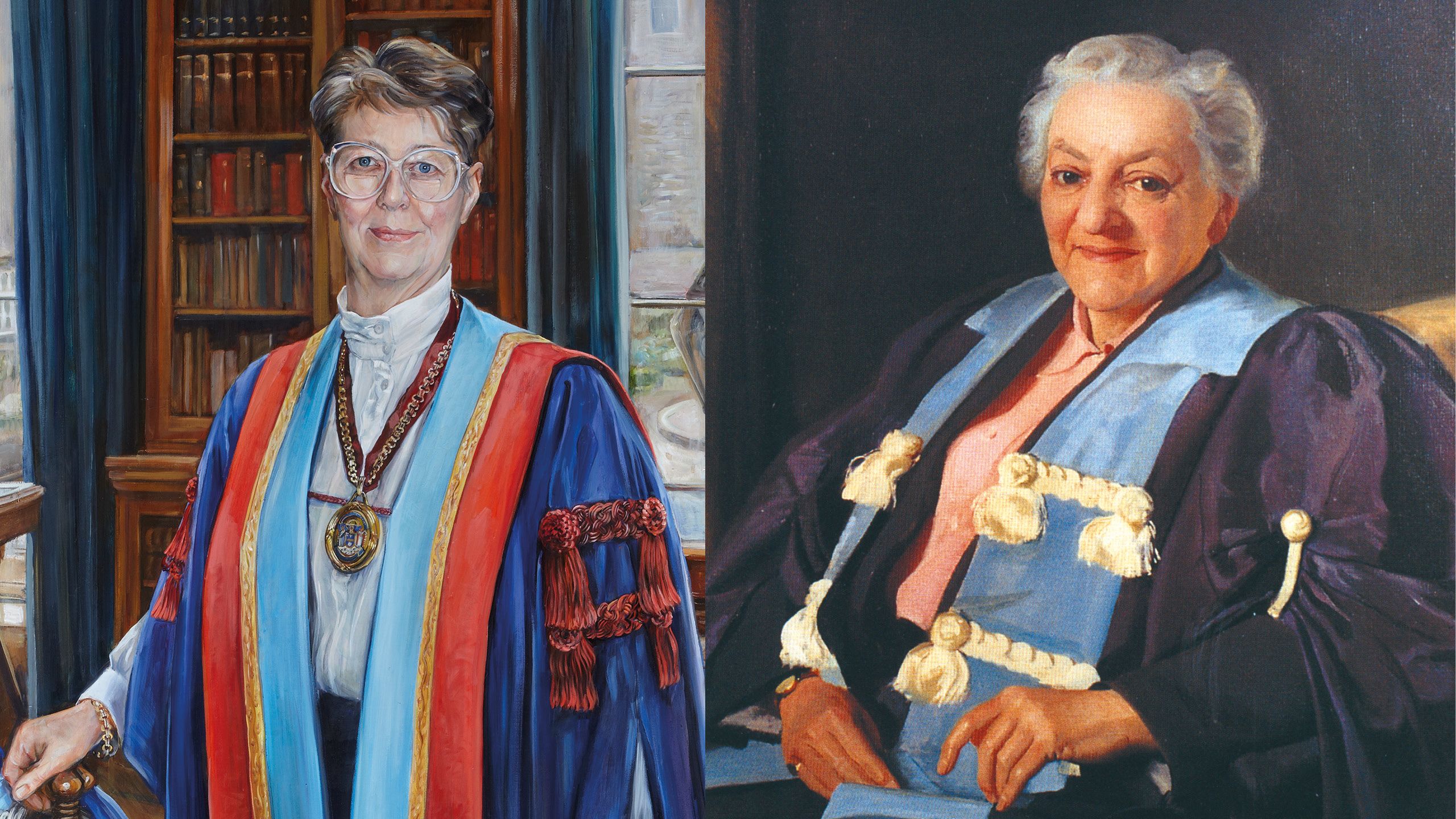
Louise Wilkie: RCSEd Curator
The Royal College of Surgeons of Edinburgh is 519 years old this year and our incredible collections from across the archive, library and museum reflect the significant developments of the College in that time. Women have been present in that history for only 104 years and admitted to the College’s governance since 1984. This explains why women are significantly underrepresented in the College’s collections.
Those who are represented tell a remarkable story of determination in a male-dominated profession and a resolve to improve the field for the next generation.
Gertrude Herzfeld (1890–1981)
Gertrude Herzfeld was the second woman to become a Fellow of this College, but the first to practice in Scotland. She qualified in medicine in 1914 on the outbreak of the First World War and became the first female House Surgeon to Sir Harold Stiles at the Edinburgh Royal Hospital for Sick Children. With work at the Royal Army Medical Corps Hospital in Aldershot, followed by an appointment as House Surgeon at Bolton Infirmary from 1917 to 1919, she was under no illusions regarding her early successes, stating: “It was the First World War that gave me my chance.”
In 1920, Herzfeld was the first woman to be appointed Honorary Assistant Surgeon at the Royal Hospital for Sick Children, Edinburgh, later becoming Senior Surgeon in 1925. She carved out an expertise in paediatrics and helped change the view that paediatrics was an element of adult surgery but instead a field of its own. While she covered all aspects of paediatric surgery, she helped develop the subspecialty of neonatal surgery. In addition, she was Lead Surgeon at Bruntsfield Hospital for women and children, where she covered a range of general, gynaecological and orthopaedic surgical procedures.
Having had to undergo her medical education in separate classes from men and relying on senior male surgeons for appointments and patient referrals, Herzfeld was active in encouraging change in the surgical world and promoting career opportunities for women, becoming President of the Women’s Medical Federation and heavily involved in the British Medical Association.
Due to her work in Edinburgh and involvement in the College, we hold material relating to Herzfeld, including pathology specimens donated to the museum and a small archive. Crucially this collection includes a formal portrait, the first of its kind to be added to our collections.
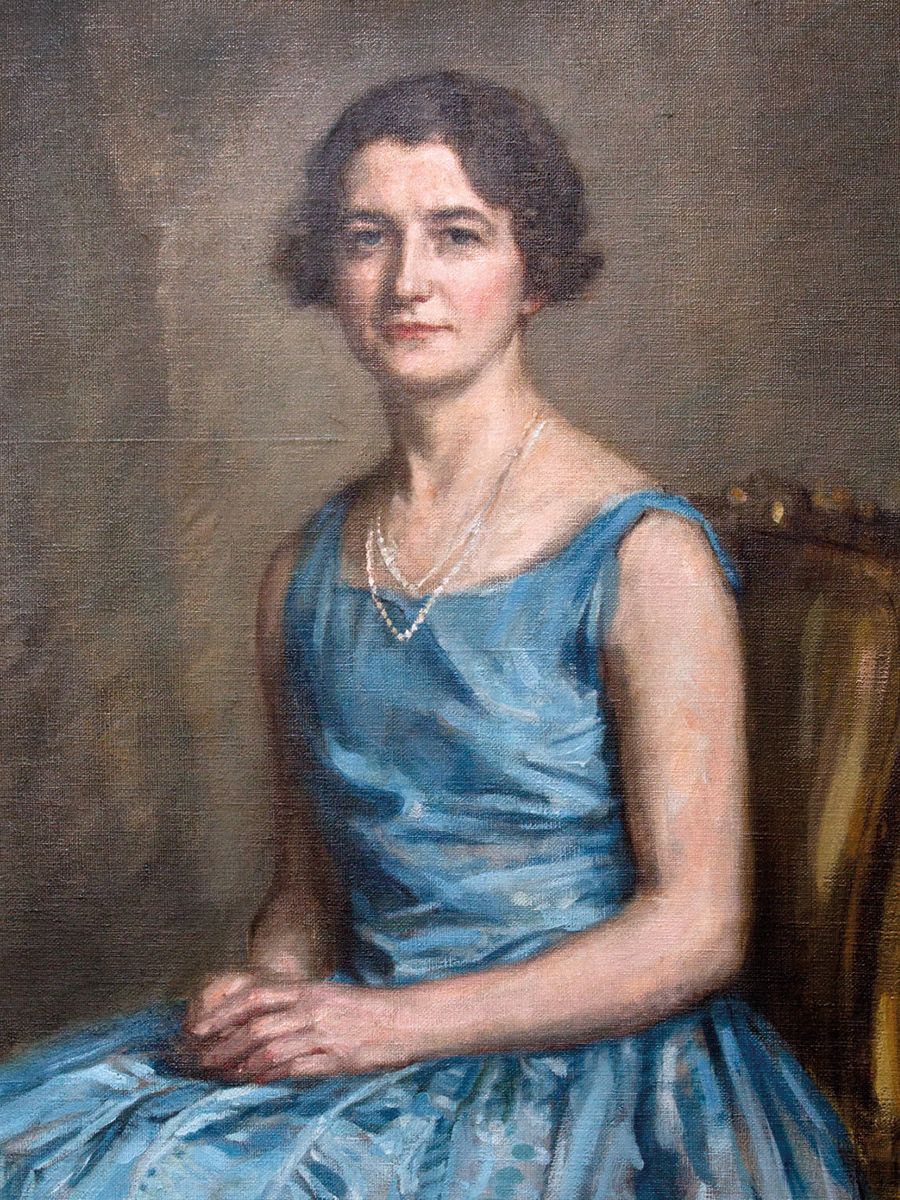
Belinda Elizabeth Nesbitt (1898–1953)
Belinda Elizabeth Nesbitt graduated from Queen’s University Belfast in 1924. She held House Surgeon posts at the Royal Ear Hospital, King Edward VII Hospital, Windsor, and Birmingham and Midland Ear, Nose and Throat Hospital. After further postgraduate study she became a Fellow of the Royal College of Surgeons of Edinburgh in 1931 and set up a consultant practice.
Further roles included Ear, Nose and Throat Surgeon at Bruntsfield Hospital and the ENT Infirmary, Edinburgh, Redlands Hospital for Women, and Dunfermline and West Fife Hospital. An obituary in the British Medical Journal in 1954 marks her sudden passing at the age of 55 in 1953, stating her sudden death “leaves a gap that will be hard to fill”.
Nesbitt’s portrait was donated to the College by her family in 2013, making it the third (and subsequently to date the last) portrait to represent women in surgery added to the collections.
Dorothy Ann Geddes (1936–1998)
Dorothy Ann Geddes made history three times: she was the first woman to take her seat as a Fellow in Dental Surgery in 1963, the first woman appointed to a professorial chair in dentistry and finally the first woman elected as Dean of the Faculty of Dental Surgery.
Geddes decided at an early age that dentistry would be her profession as it combined scientific and artistic skill. Her undergraduate education took place at the University of Edinburgh, where she graduated in 1959.
After working as a Senior Registrar in oral surgery in Birmingham, Geddes took an opportunity to work in America, undertaking five years of research in dental caries at the Eastman Dental Center in Rochester, New York. In 1975 she was appointed lecturer at the University of Glasgow, promoted to Senior Lecturer and Honorary Consultant in Periodontology and Preventive Dentistry. Due to the research contributions she made throughout her career, she was awarded the Rolex Prize by the European Organisation for Caries Research in 1998.
Geddes became Dean of the Faculty of Dental Surgery in 1992 where she inducted initiatives, particularly the introduction of specialty qualifications. This significant occasion was marked with a formal portrait set in the College library, with the Hinc Sanitas statue outside the window. It also includes one of Geddes’ beloved pet cats.
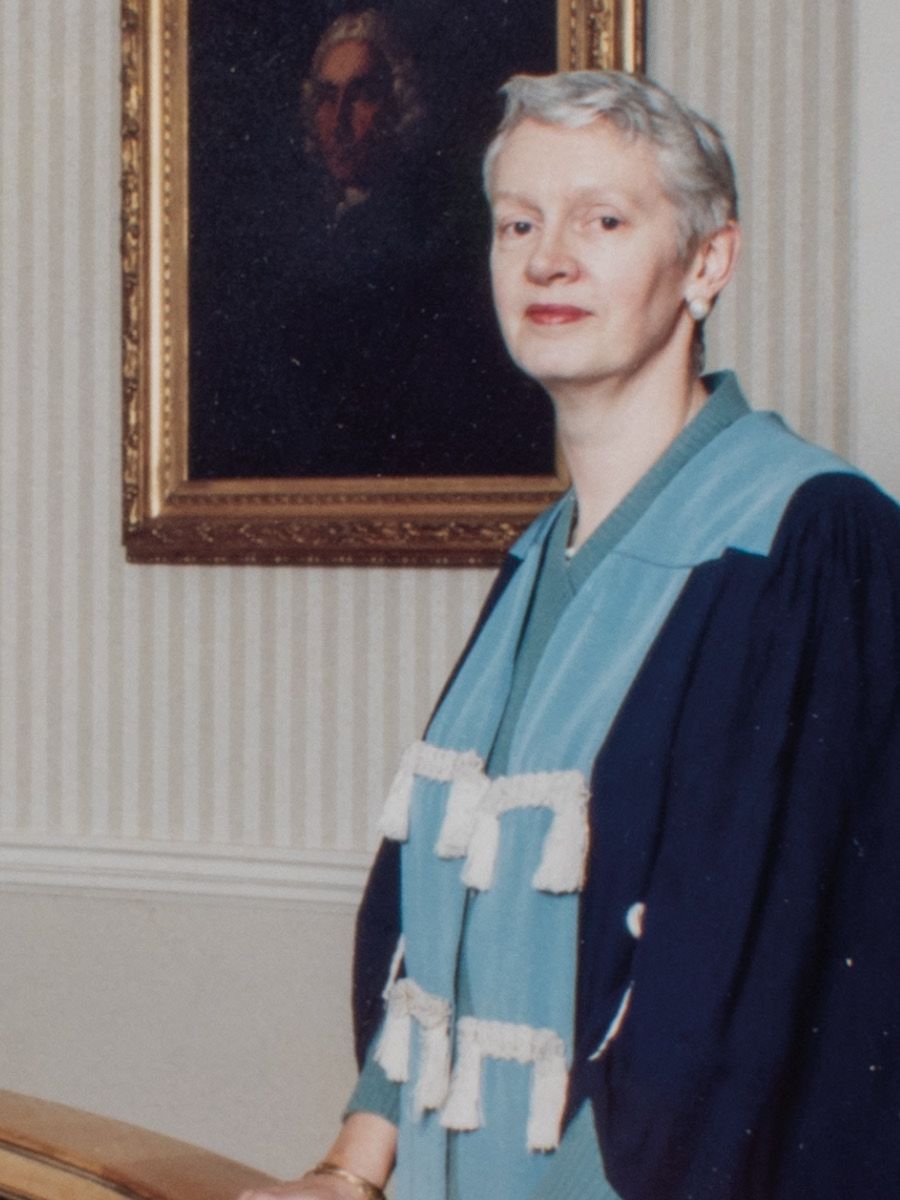
Caroline Doig
(1938-2019)
The early 20th century witnessed a gradual breaking down of surgery into specialised fields. Certain specialisms were deemed unsuited to women and those doors remained firmly closed for decades. Women were perceived as suited to traditional care-giving roles and it is thanks to determined surgeons such as Herzfeld that paediatrics became one of the more accepting of women in surgery. However, it is evident that moving into the 1950s this pigeonholing of female roles and concept of ‘male specialisms’ reduced the options for our early trailblazers. We can see this looking at Caroline Doig’s career.
Doig graduated medicine in 1962 and struggled to get the necessary surgical experience in her early medical career. She noted that even her forward-thinking renowned male mentors tried to discourage her from her chosen path in surgery. In her autobiography, Enilorac: Hands of a Lady, Doig stated: “I do not think his unsuccessful attempts to deter me were because of my ability or lack of it, but simply because I was a woman.”
During interviews she was even asked was she not going to get married and didn’t she want children. In one of her Fellowship exams, after a lunch break here at the College, she recalls the horrible experience of the booze-filled examiner consistently patting her upper thigh after each question.
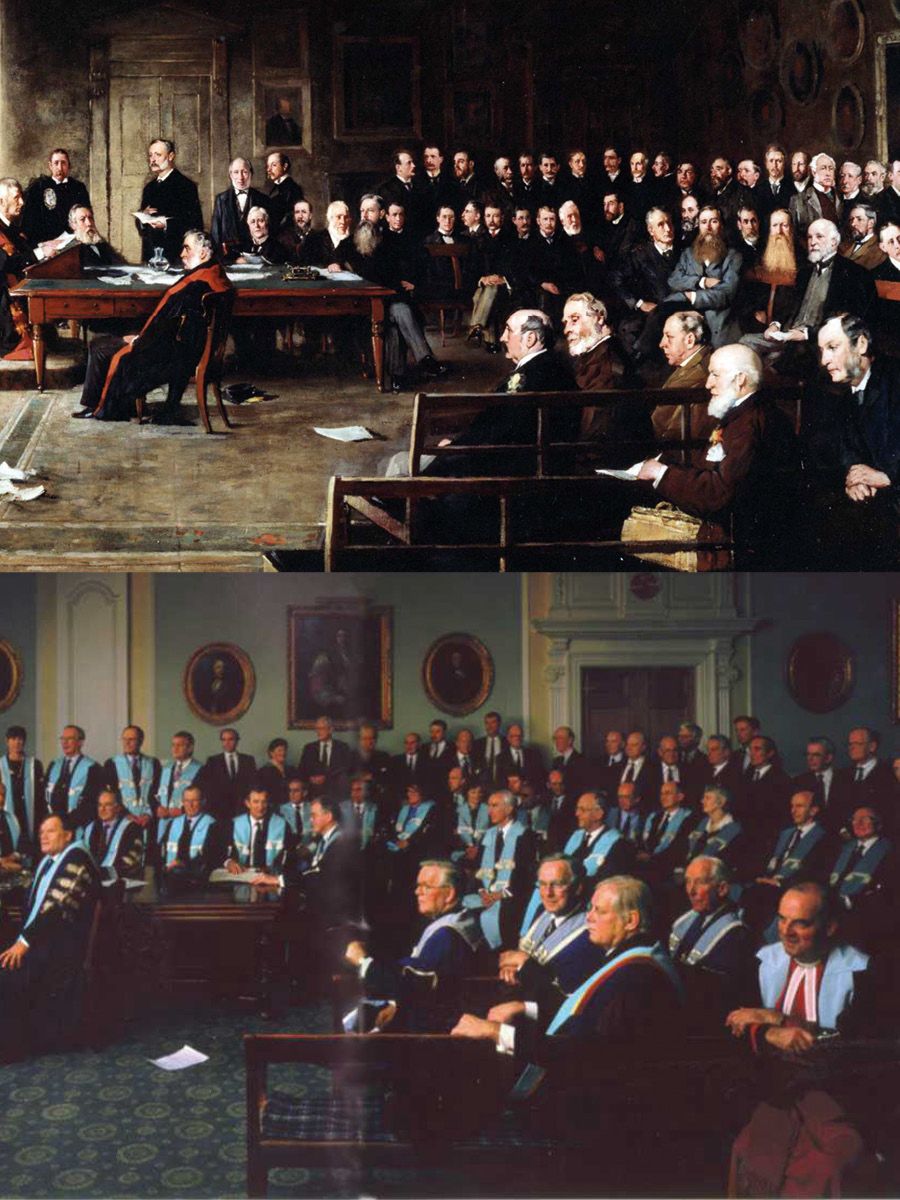
The all-male Meeting of the Fellows from 1889 (top) is in contrast to the 1999 photographic recreation of the same scene
The all-male Meeting of the Fellows from 1889 (top) is in contrast to the 1999 photographic recreation of the same scene
She said: “Naturally I froze and made a mess of my answers in the oral exam,” and simply stated: “Thankfully it was all sorted out in the end.” It is understandable to think that this sort of behaviour resides firmly in the past, but the shocking revelations of recent reports into experiences of women in surgery would suggest that is unfortunately not always the case.
Having realised early on in her introduction to surgery that a career in general surgery was impossible due to attitudes toward women in that specialism, she decided to focus on paediatric surgery and would go on to have a successful career first at Great Ormond Street Hospital and later as a consultant in Manchester.
“Thanks to these women we have an insight into what it was like to be a female surgeon in the 1920s, 1940s and 1970s”
In her autobiography she outlines the next chapter of her life as ‘Medical Politics’, and here too she made inroads.
In her words the world she entered did not have female mentors and it was not until well into her consultancy years that she could use a surgical changing room – the rooms provided until then were either for nurses or men.
Doig made history by becoming the first woman elected to Council in 1984, encouraged to do so by the very mentor who tried to dissuade her from a surgical career. In addition to her roles at the RCSEd and the Medical Women’s Federation, Doig was elected to the GMC in 1989 and in 1994 became Chairman of the Oversees Registration Committee, making history again by becoming the first woman to chair one of the main committees of the GMC.
In terms of role models she said: “There were no role models for me when I started out, but throughout my working life I acted as such for many girls who came to me for advice – and perhaps more who had became aware of the existence of a female surgeon.”
Doig declined a formal portrait, opting instead for a professional photograph to mark her historic appointment to the College Council. This is why her image does not grace the walls of the College’s corridors or the Playfair Hall. With historical photography we are restricted to hard copies that can decline with age and are often not large enough for formal display. Hopefully in the future the museum can work alongside the College to organise portrait photography or commission new artwork to help further the representation of surgeons in our art displays across the campus.
What Doig has given to the world is her autobiography, which offers a comprehensive view of her experiences as a surgeon from the 1960s to the 1980s. This crucial record ensures these achievements, difficulties and experiences are available for future generations.

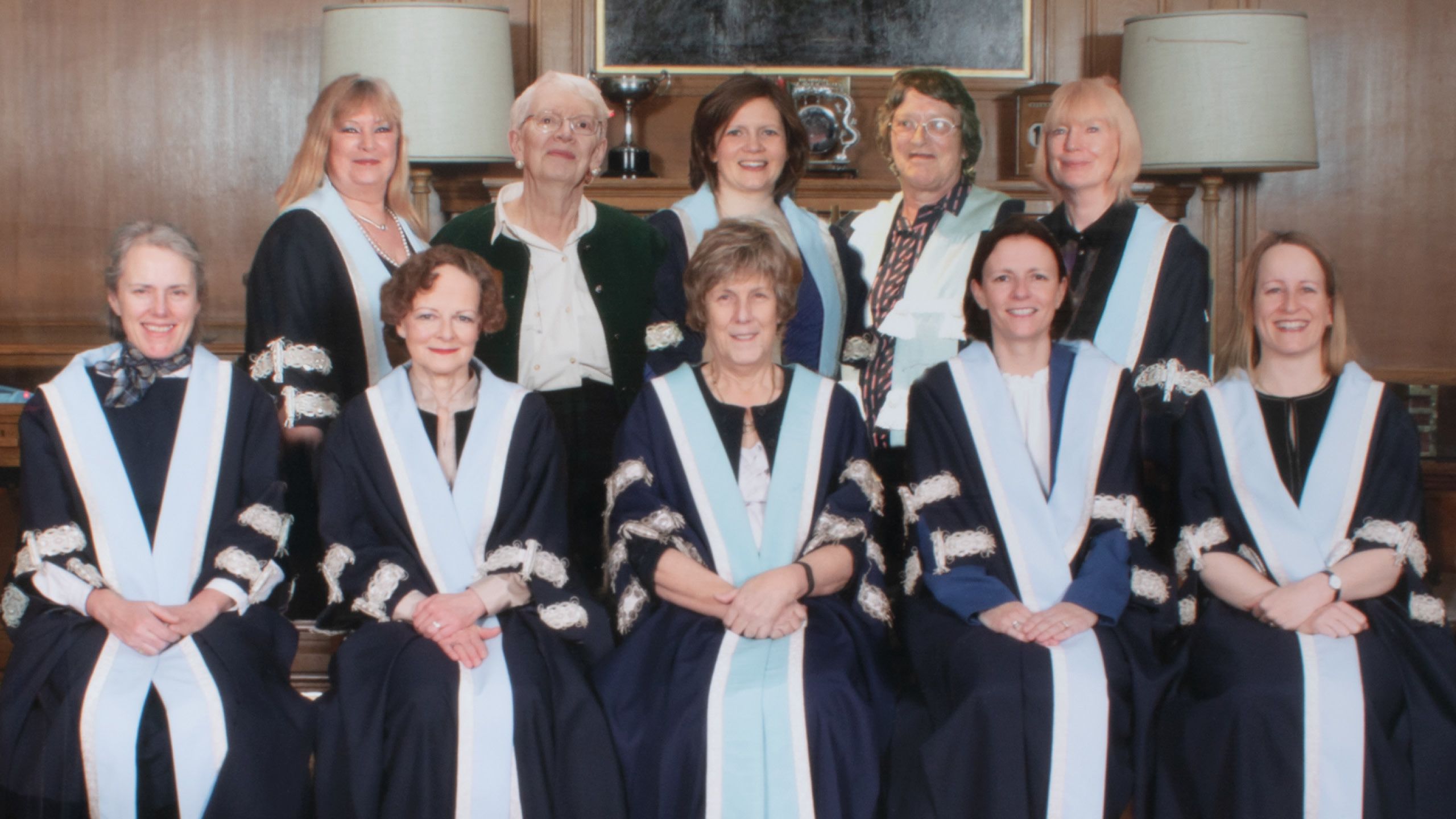
In pictures
In 1999 the College recreated the iconic 1889 Meeting of the Fellows painting by sitting for a photograph in the Playfair Hall. The main noticeable difference in the later picture is the presence of women, including Doig who is sitting in the third row.
What perhaps is striking for today’s audience is the significant disparity between the number of men and women present at the turn of the millennium. Perhaps what is needed is another recreation of the 1889 painting today to see how much further the representation of the profession of surgery has come not just in terms of gender but in all diverse minorities. The powerful photograph shown at the top of the opposite page is on display at the College reception. It highlights the increasing representation of women in the College. Dr Judy Evans was the first woman elected to be an Office-Bearer in 2015, serving as Honorary Secretary. Sitting next to her is Clare McNaught, who succeeded Evans as Honorary Secretary and became the first woman to be elected Vice-President of the College in 2022. In the back row without a gown is Doig, the first woman to become elected to Council in 1984.
Looking to the future
We are thankful for the collections we hold from these leaders. Their autobiographies, interviews, archives and images help us understand their professional journey. What we recognise as a priority is ensuring we continue to grow these collections so this ever-changing history is documented for the future.
Thanks to these women we have an insight into what it was like to be a female surgeon in the 1920s, 1940s and the 1970s. What we need to do moving forward is to record experiences from the 1980s, 1990s, 2000s, 2020s and onwards. While surgery today has come a long way from fears of female students distracting their male counterparts, surgical fields being deemed unsuited to female surgeons and being asked if one plans on having children in job interviews, there are still significant reports of inequality for women in surgical careers.
The museum and archive are keen to collect oral history from practising and retired surgeons to gather information on surgical careers and experiences from women in this field. The collections and histories we gather do not have to be related to groundbreaking firsts or monumental moments: it is crucial that everyday stories are heard and a range of representations from across all fields of surgery and dentistry are recorded.
If you are interested in working with the Heritage Department to address this lack of representation, whether that be to submit to an oral history interview, commission artwork or donate archival or museum material, then please do get in touch with the Curator or College Archivist in the first instance.
Contact the Curator
(l.wilkie@rcsed.ac.uk) or College Archivist (j.cahif@rcsed.ac.uk)


